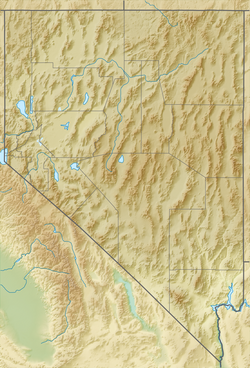| Gabbs Formation | |
|---|---|
| Stratigraphic range: Norian-Hettangian ~ | |
| Type | Formation |
| Unit of | Volcano Peak Group |
| Sub-units | Nun Mine, Mount Hyatt & Muller Canyon Members |
| Underlies | Sunrise Formation |
| Overlies | Luning Formation |
| Lithology | |
| Primary | Siltstone, limestone |
| Other | Mudstone |
| Location | |
| Coordinates | 38°30′N118°06′W / 38.5°N 118.1°W |
| Approximate paleocoordinates | 18°06′N55°42′W / 18.1°N 55.7°W |
| Region | Nevada |
| Country | United States |
| Type section | |
| Named for | Gabbs Valley Range |
| Named by | Muller & Ferguson |
| Year defined | 1939 |
The Gabbs Formation is a geologic formation in Nevada. It preserves fossils dating back to the Late Triassic and Early Jurassic periods, and is one of the few formations in the United States known to include the Triassic-Jurassic boundary. [1] [2] [3] [4] In 2007, an exposure of the Gabbs Formation at New York Canyon was proposed a candidate GSSP for the Hettangian stage, the first stage of the Jurassic. [5] However, the New York Canyon section was ultimately not selected as Hettangian GSSP, which instead went to the Kuhjoch section (Kendlbach Formation) of Austria in 2010. [6]

